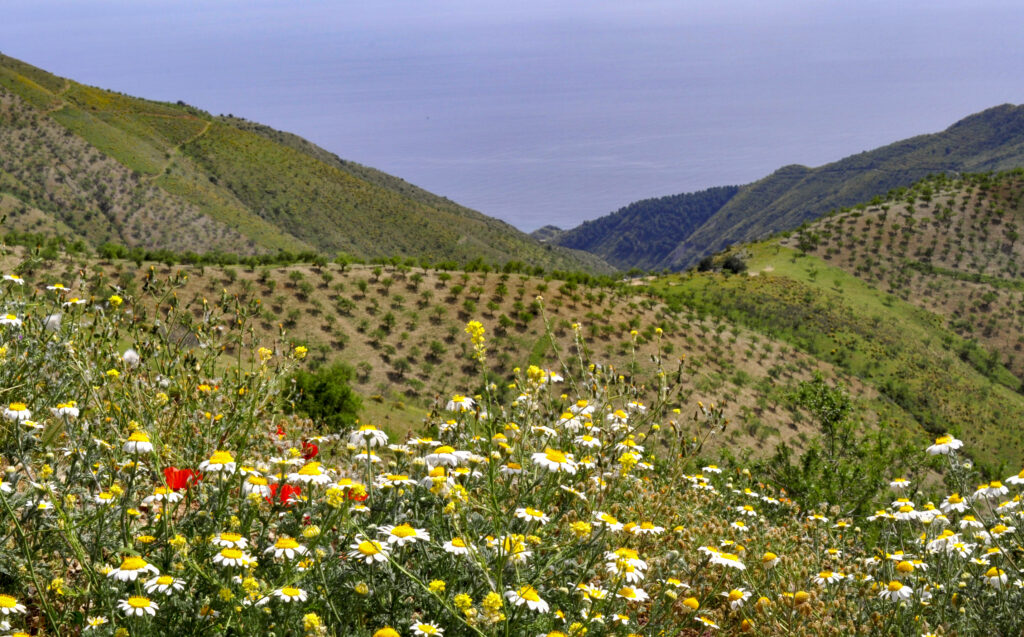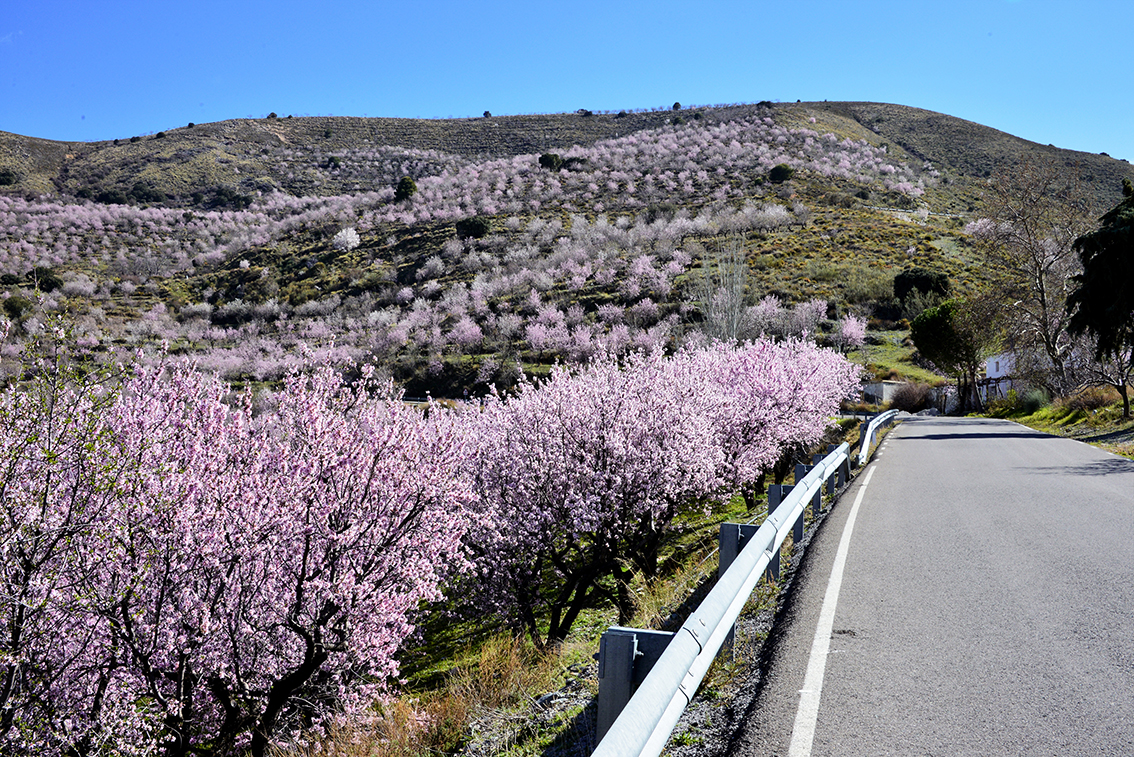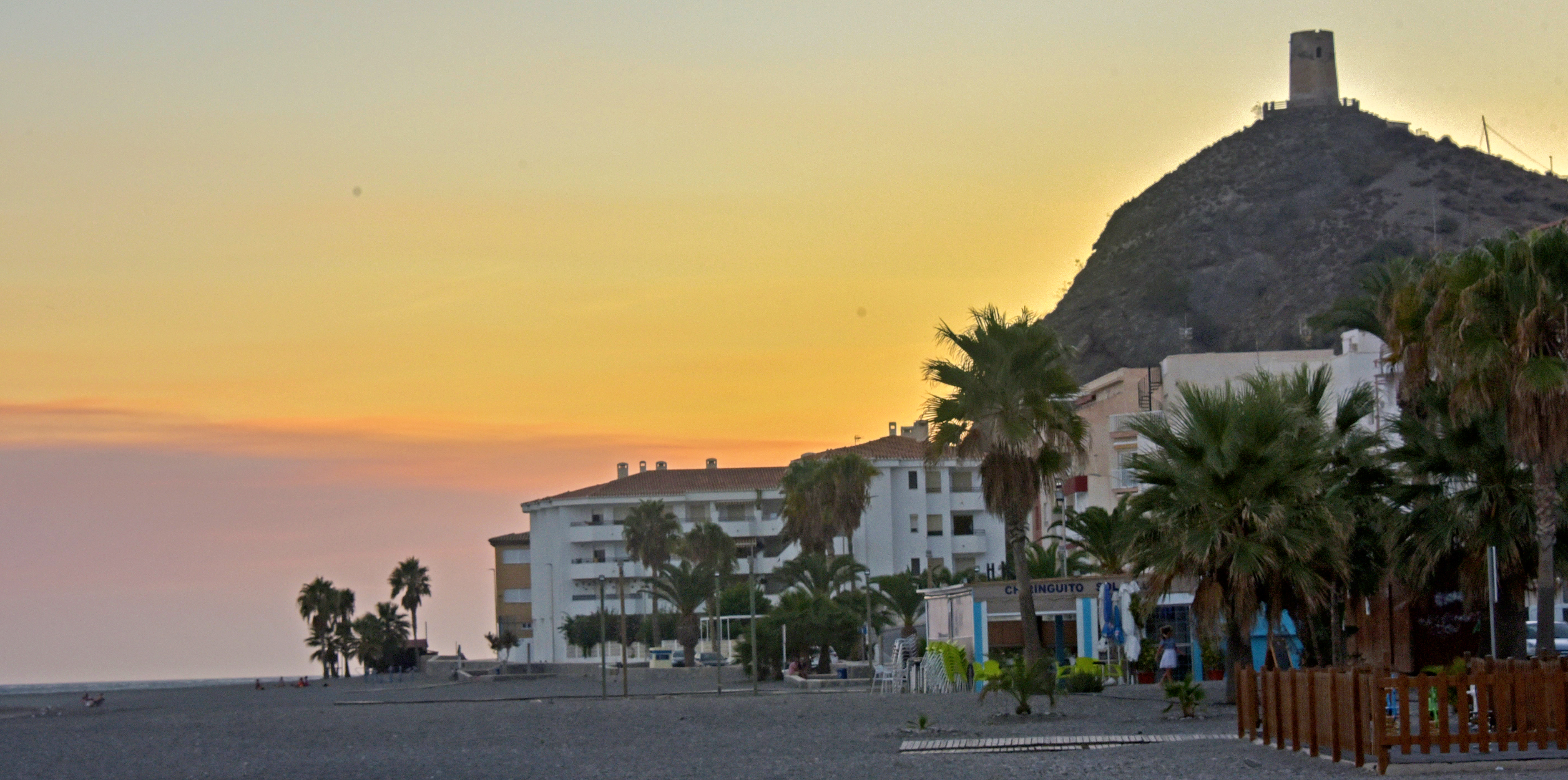WITH rolling scenery, 360-degree panoramic views, vineyards, almond blossom, and few inhabitants, the Sierra de la Contraviesa is a beautiful and unspoilt place to visit.
It forms part of the low Alpujarra (Alpujarra Baja) of Granada region, although some of the land falls within the municipality of Adra, in Almeria province.
Previously called the Sierra del Cehel, the Contraviesa sits parallel to the Sierra Nevada range, lying between the Guadalfeo River and the Costa del Sol. To the west, it borders the Sierra de Lújar – a higher and sparser mountain. To the east lies the Sierra de Gádor. The Grande de Adra river runs between both ranges, emerging at the coast.
The Contaviesa was originally formed by the earth’s crust folding where the Eurasian and African plates meet (this also causes earthquakes). Compared to the Sierra Nevada and ‘Alpujarra Alta’, the Contraviesa is rolling countryside – pretty, rather than dramatic.

The area has many ravines and ramblas to explore. The highest points are Mount Salchicha at 1,545m, near Polopos, and Cerrajón de Murtas, at 1,514m.
The Contraviesa is known for its fertile, terraced land. This is ideal for growing almonds, grapes, and figs, as it receives many hours of sunshine but isn’t as freezing as the Sierra Nevada in wintertime. The area produces ‘vino de la Contraviesa’ – also called ‘costavin’. This is a much-loved wine, natural and potent!
Panoramic views and winding roads
To travel over (or along) the Contraviesa, the motorist experiences a network of winding mountain passes with amazing panoramic views in every direction. While driving, you’ll see the peaks of the Sierra Nevada to the north, including Mulhacén and Veleta. Round the next bend, the Mediterranean Sea is sparkling, azure blue, on the horizon. However, some of the mountain passes are not suitable for nervous drivers.
Wherever you are heading, the tiny settlement of Haza del Lina is a midpoint, at 1,280m, where various mountain roads and municipalities meet. Here, you can stop and enjoy a ‘racion’ and ‘costavin’ at the friendly, family run restaurant (also called Haza del Lina). The place is surrounded by the Iberian Peninsula’s highest and oldest cork oak forest and has impressive views towards the coast.

Beautiful blossoms
Each new year, the slopes of the Contraviesa become a visual feast of almond blossoms. These start in early January, and continue until early March, depending on prevailing weather conditions. The pink blooms are a real delight for ‘budding’ photographers.
Prime locations to see almond blossoms are on the A-4131 from just past the Tablones of Órgiva, the GR-5206 near Rubite, or, for the brave, the mountain pass directly above Torvizcón which is unnamed. Remember that, depending on the direction of the sun, the blossoms tend to look the best towards dusk and after dawn (the golden hour).
Popular towns to visit
Spanning Granada and Almeria provinces, the land of the Sierra de la Contraviesa is shared between various municipalities. These are Torvizcón, Almegíjar, Cástaras, Lobras, Cádiar, Ugíjar on the north face and Murtas, Turón, Albondón, Adra, Albuñol, Sorvilán, Polopos, Rubite and Alcázar on the south.
There are many places worth a visit. A popular village is Rubite, which has impressive views towards the Med, and lies on the A-5206 towards the charming coastal town of Castell del Ferro. Polopos, just below Haza del Lino, organises an art trail every December, called ‘Pop Up Polopos’.
Another popular haunt is the Bodega de Cuatro Vientos at Murtas, which has a museum of wine production and agriculture.
Torvizcon is a good place to stop, visit a bar, and enjoy the ‘rambla’. It has a fire festival to mark the saint’s day of San Anton in January.
Like to be beside the seaside?
The coastal side of the Contraviesa offers various tranquil seaside resorts, where you won’t be fighting for space to put your sunshade and beach towel. These include Castillo del Banos, La Rabita, and La Mamola, which is part of Polopos.
La Mamola is a small agricultural town with an ancient watch tower, ‘Torre de Cautor’. It was a working fishing village, until the 1980s. Budget accommodation is available near the first line of the beach. The bars and ‘chirungitos’ also offer reasonable prices. There’s a signposted walk between La Mamola and nearby Los Yesos, where you can take in fresh air and sea views.
Along the coast towards Adra, La Rábita is another popular destination that offers affordable hotel accommodation in high season.

Things to do
- Drive along the A-5209 from Motril and the A-5207, passing through Lújar – this is one of the most beautiful mountain roads in the area.
- Drive over the A-4131 for 360-degree panoramic views.
- Design your own photography tour – remember that the best light is at sunrise and sunset.
- The PR-A-32 hiking trail winds through the Sierra de la Contraviesa. There’s also the PR-A340 from Adra to Turon, reconstructing an old fisherman’s trail.
- Visit an ancient cork oak forest.
- Visit Bodega Cuatro Vientos
- Visit Haza del Lino for food and ‘vino’.
READ MORE:
